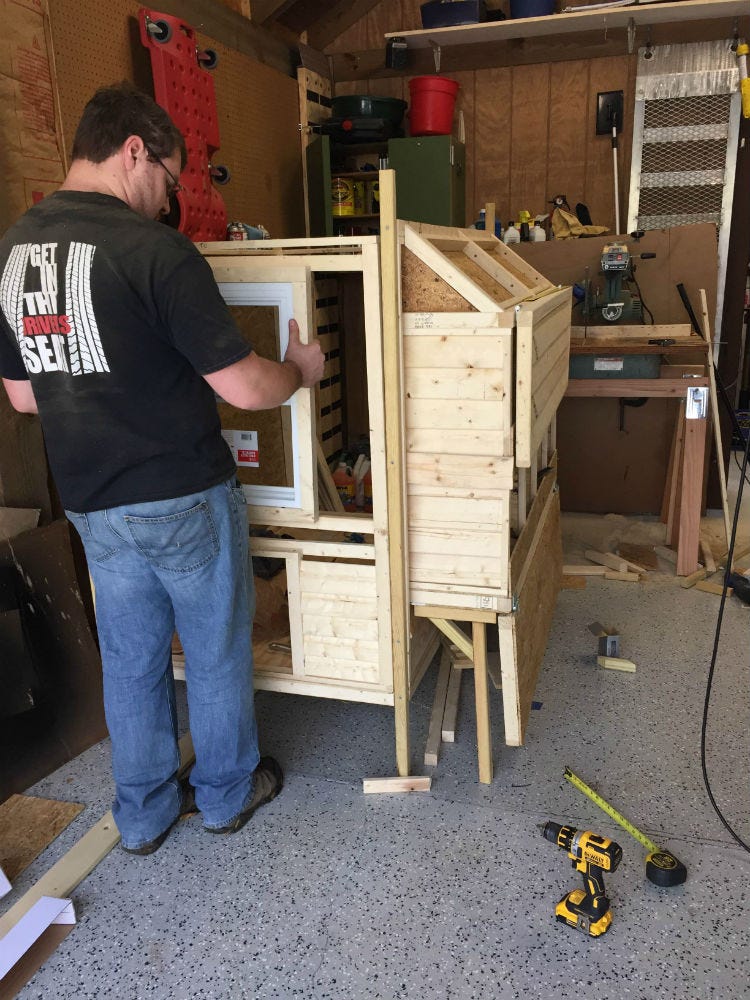3 backyard chicken tech trends
We’re creating a mobile coop and I’ve been gathering inspiration for the coop design.
Our stationary chicken coop doesn’t support the value of rotational grazing and permaculture’s principle of integrating systems. In my defense, we created our coop before I had heard of permaculture. I designed the 8-laying box coop 9 years ago this month. My husband built it and moved it under what had been a firewood shelter. We enclosed the shelter and made it the chicken run. Many chicken coops have an attached run. We wanted to make our coop completely enclosed to encourage predator protection and to use the structure that we had. It’s an essentially no-tech setup other than camera surveillance.
I mentioned in a post last year about our first encounter with flystrike that we might move to a mobile system. We aren’t moving our layers to a mobile system yet, however, our first meat birds arrived last week and they will need a place to live outside in a few weeks.
According to the American Pastured Poultry Producers Association, pastured chicken generally has higher iron, omega-3 fatty acids, antioxidants, Vitamins E and D, and lower omega-6 fatty acids. When looking for nutrient-dense foods to add to our homestead, chicken seems like a beneficial and low-effort fit. While it won’t produce the volume of food that our pastured pigs will provide, we already have experience raising chickens, the time needs for meat birds are seasonal (the breed I chose matures in 3 months), and we can repeat the process once we have the infrastructure in place.
Coop inspiration
The next structure will be the third coop that my husband has built for us. In addition to our original chicken coop, he also built the quail coop (and cottage). Our latest coop will be the first mobile one and it will be the most basic out of all of them. Even though our forthcoming chicken coop—or rather, chicken tractor—will be very low-tech and no-frills, while I collected coop inspiration, I learned about several modern tech features that go beyond the mainstream automatic solar-powered coop doors. Since we’re in baby chick season and many folks set up their first coops, and long-time backyard chicken keepers look for coop upgrades, I’m sharing a few tech options for backyard chicken coops:
RFID chicken tracking and remote monitoring. I’ll start with the most robust high-tech chicken coop that I came across. The Smart Chicken Coop created by Eggs Citing features a solar-powered automatic door and rainwater collection, but it goes a step further and monitors environment (humidity, temperature, light), levels of food, and live video surveillance. The most unique feature is their RFID chicken tracking, which shows the movements of each bird.
Egg counter and predator alerts. It might look like a repeat because the names are very similar, but The Smart Coop is a different design made by a different company. It includes some of the same features like a camera, lights, and automatic door, but it also counts eggs and includes “CluckWatch”, a predator-monitoring system that taps into more than 7 million predator images. The predator system deploys barking dog noises and flashing lights to discourage predators when it detects any.
Automatic coop doors. Solar-powered doors are probably the most well-known tech feature available for coops. Models run on solar detection and provide the flock a full day of ranging. The systems also offer scheduled times. Several companies offer automatic doors, like Omlet and Chicken Guard. When I sketched our forthcoming mobile coop I considered adding one of these doors, but ultimately decided against it. Since our meat birds will only be outside for 2 months (their first month is indoors under a brooder), the expense didn’t make sense to me. Since it’s our first time raising meat birds we might learn otherwise and can always upgrade the coop next year.
I’ll share more about our coop build process in the coming weeks. Let me know if you have any mobile coop or chicken tractor ideas.





